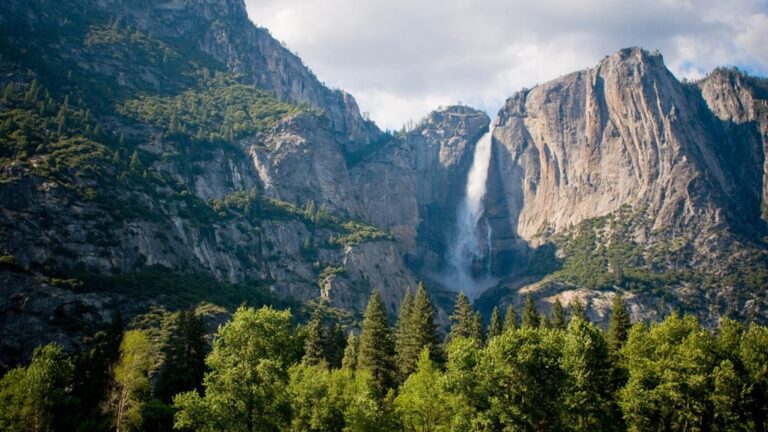Yosemite National Park is a hiker’s paradise, offering breathtaking trails that wind through towering granite cliffs, ancient sequoia groves, and sparkling waterfalls. However, hiking in Yosemite is not without its risks, and it is essential to prioritize health and safety to ensure an enjoyable and memorable experience. This comprehensive guide will provide you with the necessary knowledge and tips to keep yourself safe and healthy while exploring the wonders of Yosemite.
Preparing for Your Hike
Physical Fitness and Training
Yosemite’s trails can be physically demanding, especially if you are planning to tackle longer hikes or ascend to higher elevations. It is crucial to assess your fitness level and engage in regular training prior to your trip. Start with short hikes and gradually increase the distance and elevation gain to build endurance and prepare your body for the challenges ahead.
Packing the Essentials
Carrying the right gear is essential for a safe and comfortable hike. Pack plenty of water, as you will need to stay hydrated throughout your hike. Wear comfortable and supportive hiking boots, and consider using trekking poles for added stability on uneven terrain. Protect yourself from the sun with a wide-brimmed hat, sunglasses, and sunscreen. Additionally, pack snacks, a first-aid kit, a map, and a headlamp for emergencies.
Hiking with Safety in Mind
Staying on Designated Trails
Always stay on designated trails to avoid getting lost or damaging the park’s fragile ecosystem. Trails are marked with signs or blazes, and it is crucial to follow them even if you spot a shortcut. Shortcuts can lead you into unmarked areas, increasing your risk of injury or getting lost.
Wildlife Awareness
Yosemite is home to a diverse range of wildlife, including bears, mountain lions, and deer. Be aware of your surroundings and make noise while hiking to avoid surprising animals. Keep your food and trash properly stored in bear-proof containers, and never feed wildlife. If you encounter a bear or mountain lion, remain calm and slowly back away from the animal. Do not run or make sudden movements.
Weather Conditions
Yosemite’s weather can be unpredictable, so it is essential to check the forecast before your hike and be prepared for changing conditions. Dress in layers so that you can adjust as needed. Carry rain gear in case of precipitation, and be cautious of lightning during thunderstorms. If weather conditions become severe, seek shelter and wait out the storm.
Altitude and Heat-Related Illnesses
Altitude Sickness
Yosemite’s high altitude can cause altitude sickness, which includes symptoms such as headache, nausea, vomiting, and dizziness. Ascend gradually to give your body time to adjust to the lower oxygen levels. If you experience severe symptoms, descend to a lower elevation and seek medical attention.
Heat-Related Illnesses
Yosemite’s summer temperatures can be high, increasing the risk of heat-related illnesses such as heat exhaustion and heatstroke. Drink plenty of fluids, take breaks in shady areas, and wear loose-fitting clothing. If you experience symptoms such as excessive sweating, nausea, or dizziness, seek shade and replenish your fluids immediately.
Preparing for Emergencies
First Aid Kit
Carry a basic first-aid kit containing bandages, antiseptic, pain relievers, and gauze. Learn basic first-aid techniques before your hike so that you can treat minor injuries yourself.
Emergency Contact Information
Inform someone of your hiking itinerary and expected return time. Carry a whistle or other signaling device in case of emergencies, and familiarize yourself with the park’s emergency contact information.
Respecting the Culture and Environment
Yosemite is a protected wilderness area with a rich cultural history. Be respectful of the park’s natural and cultural resources. Pack out all trash, avoid disturbing wildlife, and follow the park’s regulations. Learn about the cultural significance of the area and engage with local Native American tribes to gain a deeper understanding of the park’s history and significance.
Nearby Transportation and Accommodation
Transportation
Yosemite National Park is accessible by car, train, and bus. The park has limited public transportation, so it is recommended to rent a car or arrange a shuttle service if you do not have your own vehicle.
Accommodation
Yosemite offers a range of accommodation options within and near the park, including campgrounds, hotels, and cabins. Book your accommodation well in advance, especially during peak season, to secure a spot.
Conclusion
Yosemite Hiking Health and Safety: A Comprehensive Guide provides you with valuable information to help you plan and execute a safe and enjoyable hiking experience in Yosemite National Park. By following the tips outlined in this guide, you can minimize risks, respect the environment, and create lasting memories while exploring the breathtaking beauty of Yosemite.
